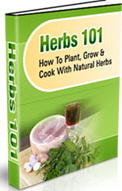The mint plant is one of the most often used herbs worldwide. It is valued for its rich and unique scent and taste. It also has a variety of medicinal uses. Besides being a sought-after herb, it has a colorful cultural history.
Cultivating The Mint Plant
The plant is generally easy to cultivate in an herb garden. It grows successfully where the soil is moist. The leaves of most species are fuzzy on the top side, and have jagged edges with small points around the perimeter. The plant spreads easily in sunny or partially shady locations in many climates. In order to keep it contained, it’s a good idea to surround it with a barrier that is at least 10 inches deep before planting it. This helps to prevent it from sending runners outside the area that you want to confine it to. Another option is to grow it in a container.
Mythology And History
In ancient Roman mythology, mint is said to have originated from a nymph character. Minthe was a young and beautiful nymph who became a mistress to Pluto. Pluto’s wife, Persephone became aware of Pluto’s relationship with Minthe, and turned Minthe into a ground-cover plant that would be continually trampled on. Pluto wasn’t able to undo Persephone’s spell, but he was able to put a positive twist on it: Minthe would give off a wonderful smell, which would be more powerful when the leaves were trodden upon.
This herb garden plant has a part in ancient Greek mythology as well. As the story goes, two strangers were traveling through a village. No one in the village offered them food, drink, or lodging, except an elderly couple, whose names were Baucis and Philemon. Before sitting their guests down for a meal, the hospitable couple wiped the table down with mint-scented leaves to freshen and clean it. Later, it was revealed that the two strangers were actually a Hermes and Zeus. Zeus blessed the humble home and mint has been a symbol of hospitality ever since.
Through the ages, the leaves of the plant have been valued very much. In fact, historical literature hints that it may have been used as money in some situations, or had a high trading value.
Medicinal Uses
This plant has several medicinal uses, making it an important addition to an herb garden. It is used in a tea to calm heartburn, reduce flatulence, stimulate appetite, and help with other gastrointestinal maladies. Topical compresses can also be made to reduce pain. Peppermint essential oil is a deep penetrating oil that helps to relax muscles. Because of this, it is sometimes a component of muscle relaxation oils, and has been used to combat menstrual cramps. It has also been used as a natural deterrent of rodents and some insects including fleas and mosquitoes.
Food and Aromas
Because of its strong and pleasing aroma, it is used in air fresheners, lotions, potpourris, and many other fragrant products. The flavor of mint is widely used. It is used in desserts, candies, medicines, toothpastes, gum, and much more. The leaves also give a burst of refreshing flavor in salads and other culinary pieces. With these leaves in your own herb garden, you can use them whenever you need them!
Strawberry Mint Salad
One head of butter lettuce cut up
30-40 fresh whole spearmint leaves
1 avocado cut into small chunks
1 pound fresh strawberries cut up
¾ cup toasted almond slivers
¾ cup feta cheese
Toss with or without dressing (recipe below) and serve.
Dressing (Optional)
¼ cup olive oil
½ cup fresh strawberries pureed
2 tsp balsamic vinegar
¼ cup water
2 tsp sugar
¼ tsp salt

